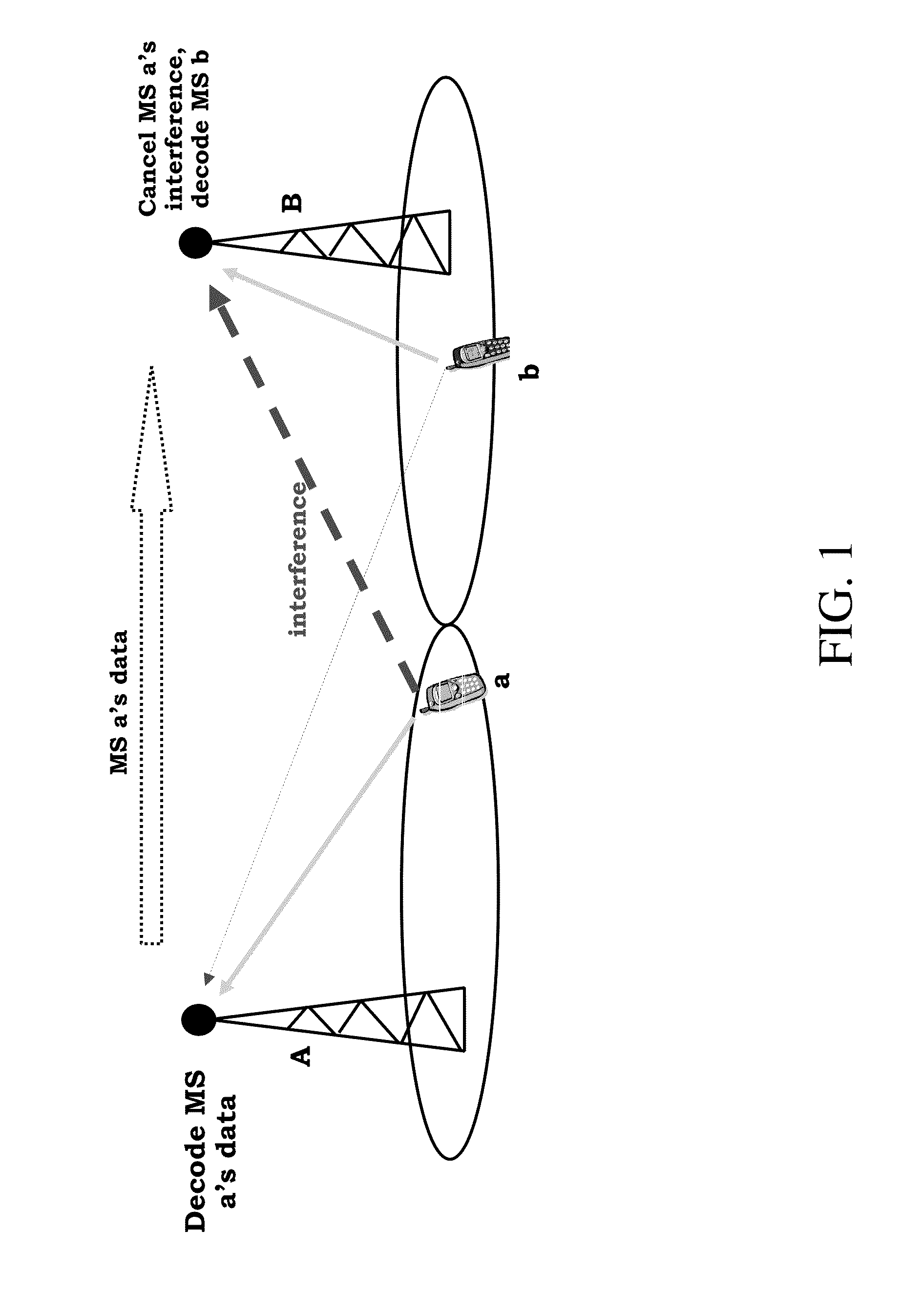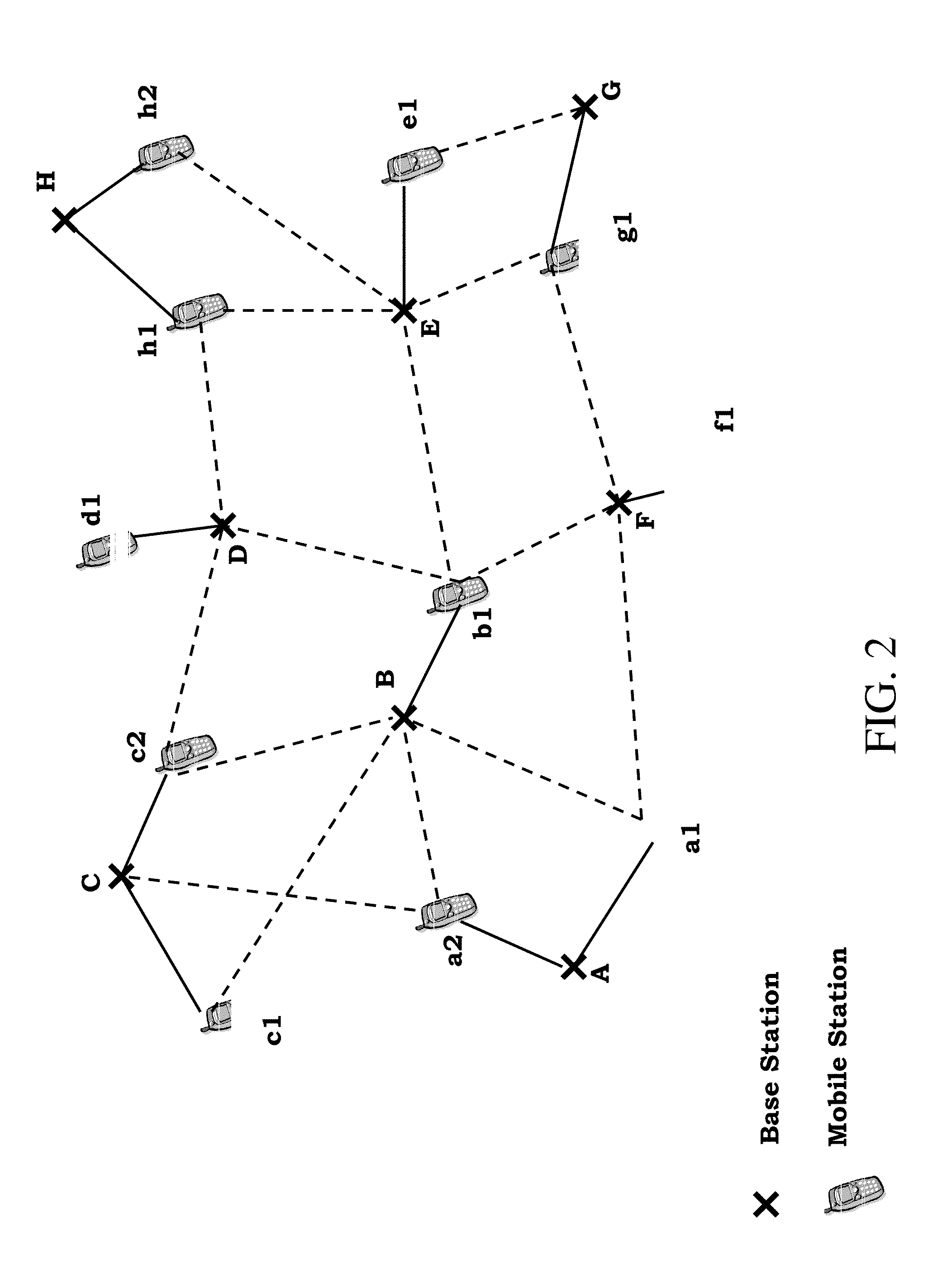Opportunistic Network Interference Cancellation For Wireless Networks
- Summary
- Abstract
- Description
- Claims
- Application Information
AI Technical Summary
Benefits of technology
Problems solved by technology
Method used
Image
Examples
Embodiment Construction
[0020]An allied set of issues addressed by embodiments of the present invention concerns the efficiency of the overall scheme for interference cancellation. Sending decoded information bits from one base station to another where they can potentially be used for interference cancellation increases the load carried by backhaul links. Since the capacity of backhaul links is an important consideration in the overall system design, it is imperative to ensure that the load on these links is kept to a minimum by sending the decoded information bits only to those base stations where they are likely to be useful for interference cancellation.
[0021]To that end, embodiments are presented herein that incorporate methods and protocols to determine when information bits decoded at a base station should be sent to another base station for interference cancellation. These methods and protocols may be implemented in a distributed manner, enabling a truly distributed scheme for network interference c...
PUM
 Login to View More
Login to View More Abstract
Description
Claims
Application Information
 Login to View More
Login to View More - R&D
- Intellectual Property
- Life Sciences
- Materials
- Tech Scout
- Unparalleled Data Quality
- Higher Quality Content
- 60% Fewer Hallucinations
Browse by: Latest US Patents, China's latest patents, Technical Efficacy Thesaurus, Application Domain, Technology Topic, Popular Technical Reports.
© 2025 PatSnap. All rights reserved.Legal|Privacy policy|Modern Slavery Act Transparency Statement|Sitemap|About US| Contact US: help@patsnap.com



